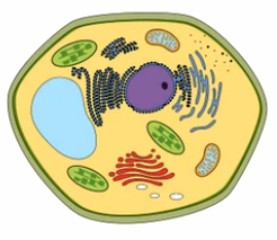Ca2+, as an essential ion in cells, not only participates in maintaining cell structure and intracellular ionic balance but also acts as a second messenger to transmit various signals.Ca2+, as a second messenger, participates in the regulation of plant growth and development, and different biotic and abiotic stress signals can induce changes in intracellular Ca2+, and it has been found that abiotic stresses, such as freezing, drought, and high salinity, as well as biotic stresses from viruses and pathogens, can induce specific calcium signals in plant cells. As the storage site of intracellular Ca2+, organelles can not only form specific calcium signals, but also regulate the changes of cytoplasmic Ca2+ concentration through Ca2+ channels and Ca2+ transporter proteins, and then participate in the regulation of intracellular signaling.
Lifeasible's plant cell calcium signaling assays are tailored to the project's needs and the material's characteristics. Currently, we are using jellyfish luminescent proteins and fluorescent protein-based Ca2+ fluorescent indicators to detect cellular Ca2+ signaling in plant cell calcium signaling accurately.

Real-time monitoring of changes in intracellular and extracellular Ca2+ concentrations is fundamental to studying calcium signaling. There are many methods for determining cellular calcium ions, which are mainly categorized into physical methods and fluorescent indicator assays. We currently mainly utilize fluorescent indicators to determine plant cellular calcium signals.
Fluorescent indicator assay. The use of some chemical molecules that can be specifically combined with calcium ions, these molecules and calcium ions specific binding, its chemical properties change, in a certain wavelength of excitation light can be issued at a specific wavelength of fluorescence, the strength of this fluorescence and the concentration of calcium ions in the solution showed a certain correlation, so the determination of fluorescence can be reflected by the strength of the concentration of calcium ions in the cell changes. At present, according to the chemical nature of the cellular calcium fluorescent indicator can be mainly divided into chemical fluorescent indicators based on calcium chelator EGTA synthesis and recombinant bioluminescent protein-based calcium indicators. In using fluorescent indicators to detect calcium signals in plant cells, we currently mainly use two Ca2+ fluorescent protein probes, jellyfish luminescent protein (aequorin) and recombinant fluorescent protein, to determine Ca2+ concentration.
Recombinant jellyfish luminescent protein is currently more widely used in determining plant cellular calcium signals. So far, JMP has been effectively used to determine the calcium signals in the cytoplasm of Arabidopsis thaliana, tobacco, soybean, and other plant cells when exposed to different external stimuli. In addition, the recombinant gene constructed from the Jellyfish Luminescent Protein (JLP) gene and the cell-specific localization signals and recombinantly expressed in the plant body not only can detect changes in cytoplasmic calcium ions but also can accurately localize to most of the subcellular structures, such as the nucleus, chloroplasts, the extracellular matrix, and other organelles, and then detect the changes in calcium ions in these organelles.

Lifeasible adopts appropriate assays according to customer requirements and experimental characteristics, which can efficiently and accurately realize the determination of calcium signaling in plant cells. In addition, we also provide other comprehensive plant assay services to meet your different needs. If you are interested in us, please feel free to contact us.
Lifeasible has established a one-stop service platform for plants. In addition to obtaining customized solutions for plant genetic engineering, customers can also conduct follow-up analysis and research on plants through our analysis platform. The analytical services we provide include but are not limited to the following:
Get Latest Lifeasible News and Updates Directly to Your Inbox
Adaptive Evolutionary Mechanism of Plants
February 28, 2025
Unraveling Cotton Development: Insights from Multi-Omics Studies
February 27, 2025